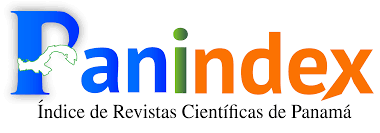
This work is licensed under a Creative Commons Attribution-NonCommercial-ShareAlike 4.0 International License.
Esta obra está bajo licencia internacional https://creativecommons.org/licenses/by-nc-sa/4.0/deed.es
La revista (y sus contenidos) emplean las licencias Creative Commons, específicamente la del tipo CC BY NC SA 4.0, la cual establece que “el beneficiario de la licencia tiene el derecho de copiar, distribuir, exhibir y representar la obra y hacer obras derivadas siempre y cuando reconozca y cite la obra de la forma especificada por el autor o el licenciante”. La licencia del tipo CC BY NC SA 4.0 contempla tres categorías,
- Atribución.
- No Comercialización de la obra.
- Compartir igual
Los lectores son libres de:
- Compartir — copiar y redistribuir el material en cualquier medio o formato
- Adaptar — remezclar, transformar y construir a partir del materialLa licenciante no puede revocar estas libertades en tanto usted siga los términos de la licencia
- Siempre y cuando se respeten y contemplen la atribución de autoría y la no comercialización del material.
Abstract
Maritime Lines need continuous equipment flow to maintain their service and operations among the port network they call. The ideal scenario for a shipping company would be every inbound container exported as a full container loaded in a short term.
Reposition costs begin right after the container has been discharged and it will increase every day if the unused unit stays in a depot. The Maritime Lines will bear these costs for a while to quicken the process, but in the end, producers and consumers will pay all. This project is being undertaken because it is necessary to identify equipment imbalances and plan equipment repositioning with minimum costs and transit times, besides trying to get credit for export cargoes by import units using the drop-off fee paid by the shipper. This way, better equipment control, which will benefit the customers, will be obtained. This strategy will help companies to avoid negative contributions by earning more cargo volume and offering competitive rates.
Keywords:
References
Van Laer, T., de Ruyter, J. ., Visconti, L. ., & Wetzels, M. G. . (2014). The Extended Transportation-Imagery Model: A Meta-Analysis of the Antecedents and Consequences of Consumers’ Narrative Transportation. The Journal of Consumer Research, 40(5), 797–817. https://doi.org/10.1086/673383

















